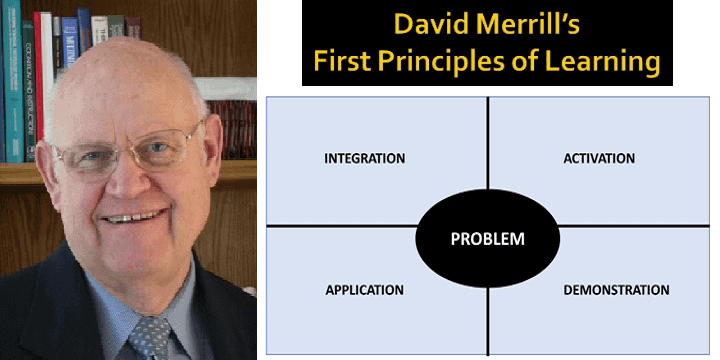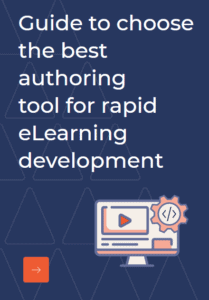There’s a lot of hype around context-based learning, learner centered learning, Learning 3.0 etc. As L&D professionals it is our job to ensure that the learning we create caters to all the learners, and delivers learning in the right way, and for this we follow certain learning design theories and standards. Merrill's First Principles of Instruction is relatively new and quite precisely covers the needs of the modern learner.
History is such that Merrill’s First Principles of Instruction (2002) is a result of his close examination of Reigeluth’s basic Instructional methods (1999).
Why is it Important today?
Merrill’s Principles are the best fit for today’s learners who prefer learning in their own way. Learning 3.0 too emphasizes on the need for learning driven bey the learners- starting as a query, leading into a discussion and finding a solution at the end. Interested to know more about it now?
Merrill’s First Principles of Instruction revolves around what we can call “problem-based learning” or “scenario-based learning.” Learning should be applied- that is the whole point, isn’t it? All the world’s training would be wasted without the right opportunity to implement what is learnt, this however would also depend on the workplace environment and on the eLearning, being used.
The principle points out 4 activities that surround the problem, i.e. the center of discussion:
Activation of prior experience
Demonstration of skills
Application of skills
Integration of these skills into real-world activities
Figure 1-Phases for Effective Instruction
Merrill gave elaborate description about what each level stands for making it easier to apply as a learning mode.
Problem
Learning is promoted when learners are engaged in solving real-world problems. So, essentially a problem should be real, and not just based on a hypothesis in order to get an applicable solution.
It begins with showing the end result of completing a module, i.e. Learning outcome/goal. It also works when learners are engaged at the problem or task level, not just the operation or action level. Learning is also promoted when learners solve a progression of problems that are plainly compared to one another.
Activation
Learning is promoted when relevant previous experience is activated.
Activation can be for previous experience, where learners are directed to recall, relate, describe, or apply knowledge from relevant past experience that can be used as a foundation for the new knowledge. It can also involve new experiences (learning) shared as a foundation for the new knowledge. Learning is also being promoted when learners are provided or encouraged to recall a structure that can be used to organize the new knowledge.
Basically, it is more about testing the existing knowledge and creating a foundation. This is where pre-tests often come into picture.
Demonstration (Show me)
Learning is promoted when the instruction demonstrates what is to be learned rather than merely telling information about what is to be learned.
The consistency of what is demonstrated with the actual learning goal is the key, and so is the level of guidance provided during the actual learning process. Say for instance directing to relevant information, multiple representations for the demonstrations etc. This along with using the right media so that it blends with the information elements to provide the right balance can ensure that the demonstration works.
Application (Let me)
Learning is promoted when learners are required to use their new knowledge or skill to solve problems.
Consistency again stays in the limelight. The post-tests, practice materials, modules for recollection/revision etc. should all be consistent with the stated or implied objectives.
Learning is also promoted when learners are guided in their problem solving by appropriate feedback and coaching, including error detection and correction, and when this coaching is gradually withdrawn. Application also depends on letting the learners solve a sequence of varied problems.
Integration
Learning is promoted when learners are encouraged to integrate (transfer) the new knowledge or skill into their everyday life.
This begins with providing the learners an arena to showcase their learning. Create an environment where they can reflect on, discuss, and defend their new knowledge or skill and also create, invent, and explore new and personal ways to use their new knowledge or skill.
Through our looking glass, Merrill’s First Principles of Instruction, is just what we need today to create learning that is holistic and continuous. Hope that this post covers the core aspects. Do share your thoughts below.



